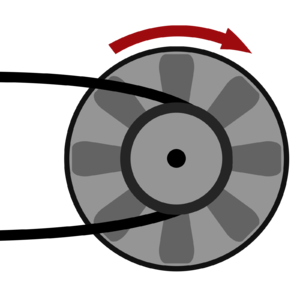Surge loads
Surge loads are loads that require an additional surge of current (inrush current) for a brief period upon starting, typically a few hundred milliseconds and at most a few seconds. This additional current is required to charge capacitors or to physically start a motor that is at rest. Once the capacitors are charged or the motor is spinning the amount of current to keep the capacitors charged or the motor spinning is much less. Common surge loads include refrigerators, compressors, fans, power tools and blenders. The current that a surge load requires could be as much five times as much the standard current draw for the load. The labels on appliances and motor often do not have information about surge requirements, but if the label does have information it will be expressed as Locked Rotor Amps (LRA). If it is not possible to find information on the label or from the manufacturer, a value of 3 times operating current is commonly used for the load analysis.
The short duration of the required surge of current does not have an impact on energy consumption and therefore isn’t relevant to sizing the PV source or energy storage system. The surge of current is only relevant when sizing and selecting an inverter for a project as the inverter must have the capacity to supply this brief surge while still continuing to run critical loads – like a refrigerator – otherwise the inverter be overloaded and will shut down each time the surge load starts. For projects with infrequently used loads that have a large surge requirement it may make sense not to size and select an inverter to enable all loads to run at the same time. Shedding loads (turning off) some loads when one desires to use the load with the large surge requirement may greatly reduce the inverter size and cost.
